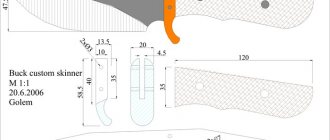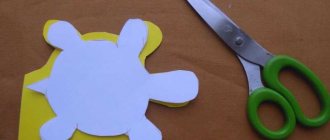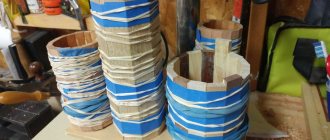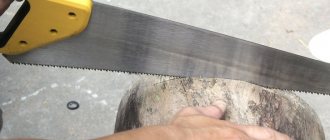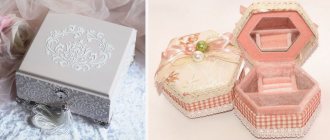The first association that arises when we hear the word “rosary” is associated with religion, clergy and prayers. But as soon as you add “changeover” to this word, your imagination pictures “not so distant” places and prisoners dashingly twirling a small strip of flat dies between their fingers. Rosaries of this format were very common in prisons and among the so-called “brothers”, because they were made from improvised materials: plexiglass, ebonite, bread, bone. Prisoners occupied their hands with such “chatterboxes” to relieve aggression and calm down.
Few people know that in fact, wooden rosary beads came to us from the Christian Caucasus. Believers in Armenia, Georgia and Azerbaijan used them during prayers. Nowadays, this accessory is also used as a religious accessory, either to develop manual dexterity, or to prevent arthritis of the wrist joints.
History of the accessory
Rosary beads first appeared in India, then in the Middle East, and from there they came to Europe. Currently, this attribute is used in all religions: Christianity, Buddhism, Hinduism and Islam. In different faiths, this accessory varies slightly, for example, in the number of beads, links, the type of dividers and the main bead, called the guru. Differences in the number of components by religion:
- Buddhism - 108 pcs.;
- Orthodoxy - 33 pcs.;
- Catholicism - 50 or 64 pcs.;
- Islam - 99 pcs.
What is the main bead:
- in Buddhism - two tassels with beads;
- in Orthodoxy - a cross with a tassel;
- in Catholicism - a cross;
- in Islam - a stone with a tassel.
It is believed that the rosary will become a talisman for the owner only if it is made from natural materials and in compliance with certain rules. The most ancient are Buddhist rosaries. They began to be used even before the beginning of our era. 108 beads in them mean the number of earthly desires that can destroy the soul. There is another explanation why the necklace is made up of this number of elements. If you multiply all the planets, zodiac signs, quarters of the Moon and lunar constellations, you will get exactly the number 108. Two tassels mean the masculine and feminine principles and symbolize the origin of life on earth.
What do flip rosary look like?
This format of rosary is completely different from the classic rosary. They are not closed in a circle, and there are no beads in the wooden crossover rosaries. Instead, flat dies are used, tightly fastened together using a strong elastic thread. There are many variations of this design: from the laconic design of wooden rectangles, to carved models with beads and crosses, decorated with a pattern.
The most common number of “beads” in flip rosaries is 13. But sometimes there are also wooden flip rosaries with 8, 10 or 12 links.
Benefits of use
Doctors confirm that nerve endings connected to the brain are concentrated at the ends of a person’s fingers. For example, in order to develop a child’s speech, it is recommended to offer them activities related to fine motor skills. The Chinese knew about this in ancient times. During stressful situations, they rolled walnuts in their fingers.
This is exactly the principle on which rosary beads work. When a person is nervous or trying to concentrate on something very important, it is useful to finger the beads with all fingers. This simple action will help improve your emotional and mental state.
According to Japanese doctors, fingering smooth beads with your thumb and forefinger can help you cope with headaches and respiratory diseases. By irritating the nerve endings on the middle finger, a person gets rid of depression. To improve the functioning of internal organs, it is necessary to use the entire palm.
Well, and, of course, rosaries are a religious attribute, with the help of which prayers or mantras are counted. The text should be said as many times as there are beads in the rosary. It is recommended to carry out the process in a secluded place so that no one interferes with concentration.
Why do you need beads in mantra meditation?
The purpose of mantra meditation is to calm our mind through a transcendental sound or mantra. Our mind is inextricably linked with our senses, in particular with the sense of touch. By concentrating our senses on the mantra, we will concentrate our restless mind on it. Hence the purpose of using rosary beads. We need beads in mantra meditation in order to use one of the five senses to concentrate the mind, namely the sense of touch.
The fact is that by consciously focusing our senses on the mantra, we automatically concentrate our mind on the sound. Our mind follows where our feelings follow. The senses are not concentrated on one object, and the mind cannot concentrate either.
Our senses are like unruly horses that need to be tamed, and our minds are like reins. If the feelings are subordinated, then the mind is calm. If the horses of our senses run in different directions towards different objects of sensory pleasure and desires, then the mind is agitated and confused. To get a clear and precise understanding of this analogy with the mind and feelings, I recommend that you watch our previous video on meditation.
But by default, in yoga and similar spiritual traditions, all our senses during meditation should be focused on the mantra and on the Lord, whose names these mantras most often are. The eyes should ideally also be concentrated on the image of the Lord. You can concentrate on the image of God in your mind. The ears should hear what you repeat at the time of mantra meditation on the rosary.
The tongue should repeat the mantra. Ideally, the nose can also be concentrated on the Lord, as I will teach you how to do this in future videos and articles. And your fingers should feel the touch of the beads of the rosary.
It’s better not just to hold the bead, but to rub or fiddle with it a little. They say that this way the repetition effect will increase several times. As you rub the bead, feel as if you are touching the mantra. Focus your mind on what you are saying and what you are doing with the bead with your fingers.
DIY making
You can make a rosary for yourself or use it as a gift for family or friends. They are used as a religious attribute, an accessory that emphasizes an image, or an object that calms the nerves. To make rosary beads with your own hands, you need to study their history and purpose. After all, they will be useful only if they are made according to all the rules.
Material quality
The correct rosary is made only from natural materials: stone, precious metals, wood, organic glass. When selecting raw materials, you should understand for what purpose the souvenir is needed:
- juniper will help scare away evil spirits or get rid of bad influences;
- pearls or rock crystal remove obstacles in life and increase the immunity of its owner;
- a gold, silver, copper or amber product will increase the life expectancy of its owner, add wisdom and fortitude to him;
- cedar helps relieve headaches, reduces blood pressure, and improves sleep.
Process steps
All rosaries have a certain structure. They consist of beads strung on a strong fishing line. Between them at certain intervals there are separator beads. A must-have is the guru bead, which represents different objects in different faiths.
To make Buddhist rosary, you will need:
- beads - 107 pcs.;
- strong thread;
- rope;
- large bead - 1 pc.;
- scissors;
- glue.
The beads must be the same size. They are strung on a strong thread. It's best if it's fishing line. After each element you should tie a knot. It symbolizes connection with the Universe and helps to focus on meditation. After all the elements are put on, you need to make and secure the main guru bead. In Buddhism, it consists of two tassels with beads.
Let's start the lesson
To work you will need:
- Beads (preferably used from natural materials);
- Silk thread (you can use an elastic band, then the rosary will stretch, but traditionally the beads are strung on a thread);
- Separating bead with three holes;
- Guru bead;
- Brush;
- Scissors;
- Glue.
You need to take exactly 107 absolutely identical (in color and size) beads and put them on a thread (or elastic band, depending on which base you chose). Now the separating bead is used: we insert both ends of the cord into it, on which the beads are already put on. We insert the ends into our guru bead. The product needs to be secured, we do this using the most ordinary knots.
It is very important at this stage not to forget about the distances between the beads; if you are going to sort them out, these intervals should be small.
We attach the tassel, tying it with a very ordinary knot. Now put beads of the same size on each piece of cord as on the rosary. We tie the ends tightly; for reliability, you can seal the ends with glue.
Related article: Pattern of a straight classic skirt with a vent: construction
These are the rosary we got. What other options are there, you can see in the photo:
What is a rosary
Rosary beads are a special type of religious paraphernalia. They are used by believers of different faiths. In Orthodoxy, all monastics have them. The very first religious objects of this type appeared in the 4th century in monastic communities. They were invented so that the inhabitants of the communities, who were mostly illiterate, could count the required number of bows and prayers during prayer work.
The monks had to pray not only during the allotted time, but also while working. Usually the work was monotonous, which is why they often felt sleepy. By fingering the rosary, they concentrated better on their work and did not fall asleep. Now every monk, choosing monastic life, must receive this item.
What do rosary beads look like? These are beads strung on ribbons or threads closed into a ring. Small beads are separated from each other by larger balls or knots. Separation occurs after every ten balls. Orthodox religious elements must have a cross.
How many beads are in a rosary? There can be from 1 dozen to 10 in a chain. They are made of different materials. There are stone, wood, glass, woven wool, soutache.
How Orthodox Christians Use Rosary Beads
This attribute helps Orthodox Christians read prayers. Most often, a believer reads the Jesus Prayer (“Lord Jesus Christ, Son of God, have mercy on me, a sinner”), sorting through smaller beads. When it reaches a large grain, say the prayer “Rejoice to the Virgin Mary,” Guardian Angel, and also “It is worthy to eat.” Reaching the cross, he reads the main great prayer - “Our Father.”
Is it possible for the laity to use this cult paraphernalia? It is believed that the laity cannot use it without blessing. Before purchasing, a layman must take a blessing, because not every Christian knows how to use this item. The priest will explain how to use the rosary, which ones to choose, which prayers to read.
But there is also an explanation: blessing is required when a person undertakes a feat of prayer in order to read prayers according to special rules. To find out whether you need to take a blessing, it is better to ask your confessor.
Usually the priest advises using them during private prayer. These items act as an aid to the worshiper in concentrating on his prayers. They have no other function.
Do not think that they are endowed with any magical or protective properties. They don't have this, so it shouldn't be worn as decoration, displayed on every occasion, or hung in the car.
How to make a rosary from scrap materials
Before you start making rosary beads, first decide for what purposes you will use them. If for reading prayers, meditation and other religious rituals, then your attribute must have the appropriate number of beads. For Buddhism this number is 18, 21, 27, 54 or 108, for Hinduism - 50, 54, 108, for Islam - 11, 33, 99 plus an additional pendant, for Catholicism - 50, divided by five tens, for Orthodoxy - 33, 103 or a multiple of 12 or 10, for the Old Believers - 109.
If the rosary has nothing to do with religion, but only becomes a calming attribute in your life, then the number of beads does not matter.
For example, in the world of thieves it is customary to have so-called flip rosaries, which, according to thieves' legends, helped pickpockets practice sleight of hand.
How to make a rosary : deciding on the material for production
Rosaries can be made from completely different materials. The easiest way is to go to the nearest store that sells all kinds of jewelry and buy some beads or a bracelet. At home, you simply disassemble the product into its component elements (beads), in which holes are already drilled, and string them on fishing line or strong thread in the way you need.
You can not buy jewelry, but sacrifice your grandmother’s old beads or even your own beads that you don’t wear for the sake of rosaries.
How to make a rosary from bread
Bread, or rather its crumb, is a popular “building” material among prisoners. Various crafts are made from it: dominoes, chess pieces, ashtrays, and also beads for rosaries.
The crumb of low-quality wheat or rye bread should be kneaded in your hands until it becomes plastic, like plasticine (this takes about two hours of continuous work). To prevent bread products from cracking after drying, sugar should initially be added to the crumb. Moreover, the higher quality the bread, the more sweet sand you will need to add. Then beads or plates are molded from the plastic crumb. If desired, you can add coloring to the bread. For example, if you want to get black rosaries, use ashes from burnt paper, and for colored rosaries you should add ink extracted from ballpoint or gel pens.
In addition to the method described above, inventive prisoners make magnificent beads for rosaries from melted plastic parts of ballpoint pens and disposable razors, ebonite, and even from packages of instant noodles, such as Doshirak and Rollton.
How to make a rosary from plexiglass
Purchase plexiglass at the construction market (approximately 90 by 90 mm in size and 5 to 10 mm thick). Next, decide what size and shape you want the beads on your rosary to be (you can look at photos of finished products online and choose the one you like). Then we transfer the sketch onto a sheet of paper in a box at the required scale. Now we take a ruler, plexiglass and that sharp tool with which you will draw the contours from the sketch on it. Proceed with caution as plexiglass is very easy to scratch.
Take a metal file and start cutting out the elements carefully, making sure not to deviate from the markings. Now you need to sand and polish each bead. Use sandpaper for sanding. Start with 240 grain and finish the process with 1000. Next, use a piece of genuine leather to polish. When your beads are smooth, nice and shiny, drill holes in them for thread to thread through.
How to make a classic rosary
Prepare the required number of beads of the same size and color and one larger bead (it may even have a different shape or even not be shaped like a ball). All beads except the main one should be strung on a thread or fishing line. For strength, tie a knot after each bead you put on. Now thread both ends of the thread into a large bead, tie two or three knots and trim the ends with scissors (you can even melt them). If desired, the rosary can be decorated with a tassel. To do this, gather a bunch of threads and insert them before tying a knot. Make another fixing knot, straighten the brush and trim its edges using scissors.
How to make a flip rosary
Flip rosaries are an open contour in the form of a flat ribbon of rectangular or cross-shaped plates assembled on a thread. In order to make such an attribute, take two threads and tie them at one end. Then string the plates (for this you need to make two pairs of holes in each). The plates can be alternated with ball beads.
Types of Orthodox prayer beads
Christians must use only Orthodox attributes. In this case, you need to know how they differ from religious objects of other faiths.
When choosing this spiritual item, pay attention to the number of links. For the Orthodox, it is a multiple of ten: 20, 30, 50, 100, 150. Previously, they were made only from leather (lestovka) or wool (knots). Stone and wood came to us from other spiritual cultures, but can also be used when reading prayers if you have received a blessing.
What are the differences between Buddhist rosaries?
Buddhist rosary beads (malas) are also made of beads strung on a cord, at the end of which there are many threads similar to a “tail”. While reciting mantras, believers also sort out the beads so as not to lose count and not miss the mantra.
Typically, Buddhist malas consist of 108 beads, but there are 18, 21, 27 beads.
When mantras are read, the malas accumulate energy, coming into resonance with the energy of the person praying. Therefore, in Buddhism they are used as amulets that bring good luck and improve the life of the wearer.
People who profess Buddhism have been using the same beads for a long time. During use, they gain positive energy, which helps a person get rid of nervous tension, gain peace of mind, and recover from many diseases.
Types of Buddhist rosary
Malas are made in different colors and different materials. This is done because each color and material has its own effect on the body.
Usually the color of the beads and the color of the thread are made in the same color.
How do they affect a person, based on color:
- For treatment, white objects made of pearls, white sandalwood, crystal, and ivory are used. White color purifies and heals all diseases;
- Yellow sunny color will help increase energy in the body and increase wealth;
- Black and red are suitable for tactical practices.
The color, thickness of the thread on which the beads are strung, and even their shape help determine which school a believer belongs to and find out what level of initiation he is at.
How the material affects humans:
- Red sandalwood has a warming effect;
- White sandalwood will help you calm down and overcome temptations;
- Juniper eliminates any negative influence;
- The oak will act as a protector for its owner;
- Lotus seeds will contribute to increasing prosperity;
- Rudraksha seeds will help to endow a person with strength and great energy potential.
If the beads are not made from wood, then what stones are they made from?
- Pearl is a feminine stone. It reveals a person’s creative potential, harmonizes the work of all 7 chakras;
- White agate promotes spiritual growth and increased intelligence;
- Vajrayana followers choose cult items made from the frontal portion of the human skull to enhance psychic abilities.
You can use Buddhist objects just like Christian ones. Only you need to read not prayers, but mantras. Usually believers buy a special bag in which they keep their rosary. They even sort it out in a bag so that foreign energy does not spoil their strength.
If you start reading mantras, then do not quarrel, forget obscene language, do not raise your voice, do not drink alcohol, do not smoke, so as not to “damage” the positive energy.
What is the difference between “talkers”
Flip beads or “talkers” are a mandatory attribute that emphasizes a certain image of their owner. The ability to handle them correctly also gives a person a certain authority and status.
Initially, such an attribute was made in places of deprivation of liberty. These were handmade models from the most expensive materials - stones, metal or northern wood.
You need to know how to turn the “talkers”. But knowledge does not come immediately. You need to have a skill that can be practiced over months and even years.
Transfer items are carried only in the hands. The simplest technique looks like this:
- Hold the rosary between the middle and index fingers in the center. You can take it in any hand.
- Next, flip the lower end so that it is at the top. Pinch with your thumb and index finger.
- After this, you should wave the end of the rosary again. There should be a full rotation around your fingers.
- Thus, go around in a circle. The rosary should twist in the same direction. It is important that the ends click during contact.
There are other, more complex practices for handling this item. The more relaxed and easier a person performs all movements, the higher his authority.
Non-religious use
Despite the fact that the main function of the product still lies on the spiritual plane, rosary beads have found wide application in the everyday sphere: varied in length and shape, they decorate the hands of those who like meditation and relaxation, help those who have problems with joints, and children's flip rosary help development of fine motor skills. For some time now, expensive designs have become a sign of ostentatious chic, practically losing any meaning. In addition, the creation of rosaries has become a kind of “prison creativity”, which, thanks to the non-standard materials at hand, acquires a completely unique external implementation.



